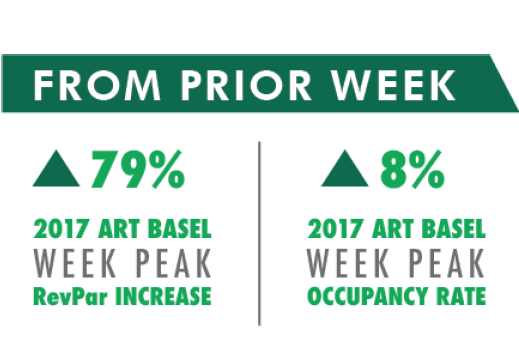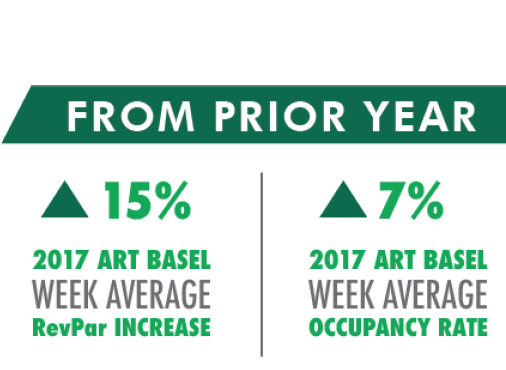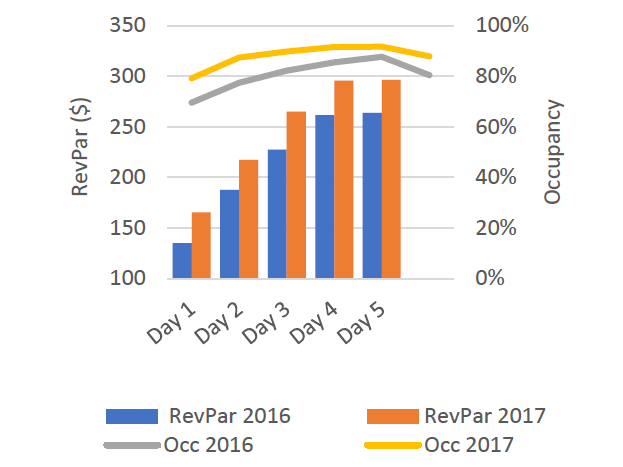Art Basel Boosts Miami Hospitality
Founded in 1970 in Switzerland, the Modern and contemporary art fair landed in South Florida in 2002. It has improved hospitality demand, CBRE research shows, with unprecedented increases recorded in December 2017.
By Timea Papp
Art Basel, the largest global Modern and contemporary art fair, now draws an estimated 80,000 people to Miami, making it one of the major stops among art dealers around the world. Founded in 1970 in Basel, Switzerland, the fair first came to Miami Beach in 2002, attracting 160 galleries and 30,000 attendees as the event’s first international outpost.
Last year, Art Basel took place in early December and, according to CBRE research, the impact on Miami’s hotels was unprecedented. The fair’s effect on Miami’s hospitality sector is second only to the Christmas Holiday season. Demand for rooms increased significantly during the Art Basel week, up 79 percent compared to the prior week, with a maximum spike north of $296 across the Miami area.
Spiking RevPAR
Recently released data by STR for the 2017 Art Basel week revealed that Miami’s hotels recorded measurable performance gains, with average Revenue per Available Room (RevPAR) up 15 percent year-over-year for the five-day duration of the event. Additionally, average occupancy was 7 percent higher, also reflecting that more people are attending the event.
Miami Beach hotels experienced similar increases, taking their Average Daily Rate (ADR) over the $550 mark during Art Basel peak. By comparison, ADR for Miami Beach was $196 at the end of the third quarter of 2017. Major Miami Beach hotel managers concurred that their properties experienced a much stronger impact in 2017 compared to the event’s previous edition.
Food & beverage revenue was the big winner, with stronger year-over-year gains than ADR. General managers indicated that overall gains were well into double digits due to increased food and beverage spending. While Christmas is a bigger event in Miami Beach, Art Basel brings greater ultra-high net worth individual and corporate sponsorship food and beverage spending due to the nature of the event.
Despite fears of financial repercussions from Hurricane Irma, the numbers registered in the 2017 season point toward a rising stock market and increased economic confidence. The end of the 2016 Zika scare is also among the factors that contributed to the healthier performance of Miami’s hotel market during the art fair.
Miami International Airport recorded a 4.7 percent increase in international passenger and 8.3 percent rise in domestic passenger counts. Art Basel has steadily grown in popularity since its inception, with more attendees participating each year. In 2017, the event was moved back a week—compared to 2016—to space it out more evenly between Thanksgiving and Christmas.
The event generates $500 million for South Florida’s economy, according to estimates of The City of Miami Beach. Art Basel signed an agreement with Miami Beach in October 2017 to keep the event in town through 2022—which means an additional five years. Consequently, Miami Beach’s Convention Center, which serves as the event’s venue, is now undergoing a $615 million renovation slated for completion by 2019.
Images courtesy of CBRE Research










You must be logged in to post a comment.